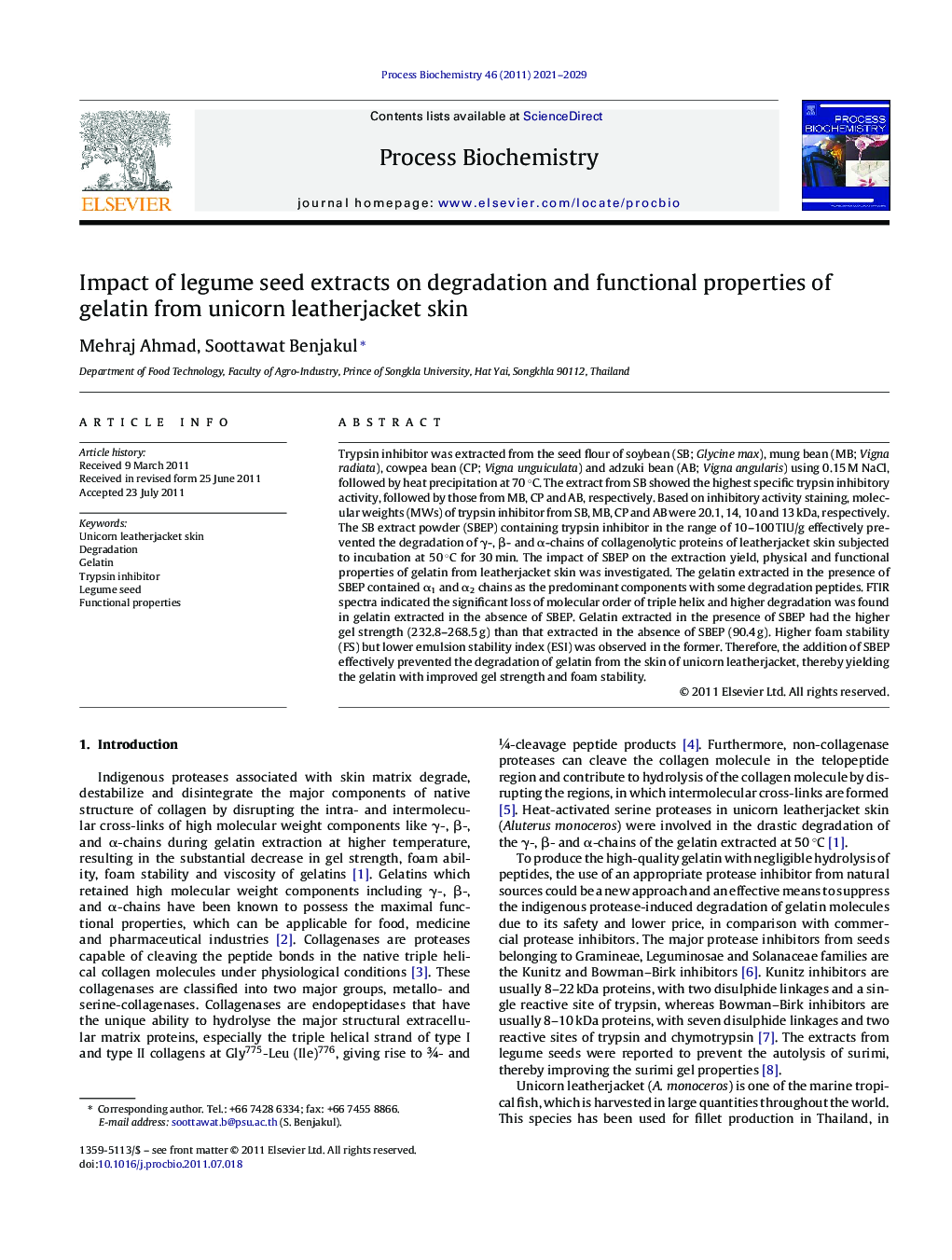| Article ID | Journal | Published Year | Pages | File Type |
|---|---|---|---|---|
| 10235868 | Process Biochemistry | 2011 | 9 Pages |
Abstract
Trypsin inhibitor was extracted from the seed flour of soybean (SB; Glycine max), mung bean (MB; Vigna radiata), cowpea bean (CP; Vigna unguiculata) and adzuki bean (AB; Vigna angularis) using 0.15 M NaCl, followed by heat precipitation at 70 °C. The extract from SB showed the highest specific trypsin inhibitory activity, followed by those from MB, CP and AB, respectively. Based on inhibitory activity staining, molecular weights (MWs) of trypsin inhibitor from SB, MB, CP and AB were 20.1, 14, 10 and 13 kDa, respectively. The SB extract powder (SBEP) containing trypsin inhibitor in the range of 10-100 TIU/g effectively prevented the degradation of γ-, β- and α-chains of collagenolytic proteins of leatherjacket skin subjected to incubation at 50 °C for 30 min. The impact of SBEP on the extraction yield, physical and functional properties of gelatin from leatherjacket skin was investigated. The gelatin extracted in the presence of SBEP contained α1 and α2 chains as the predominant components with some degradation peptides. FTIR spectra indicated the significant loss of molecular order of triple helix and higher degradation was found in gelatin extracted in the absence of SBEP. Gelatin extracted in the presence of SBEP had the higher gel strength (232.8-268.5 g) than that extracted in the absence of SBEP (90.4 g). Higher foam stability (FS) but lower emulsion stability index (ESI) was observed in the former. Therefore, the addition of SBEP effectively prevented the degradation of gelatin from the skin of unicorn leatherjacket, thereby yielding the gelatin with improved gel strength and foam stability.
Related Topics
Physical Sciences and Engineering
Chemical Engineering
Bioengineering
Authors
Mehraj Ahmad, Soottawat Benjakul,
